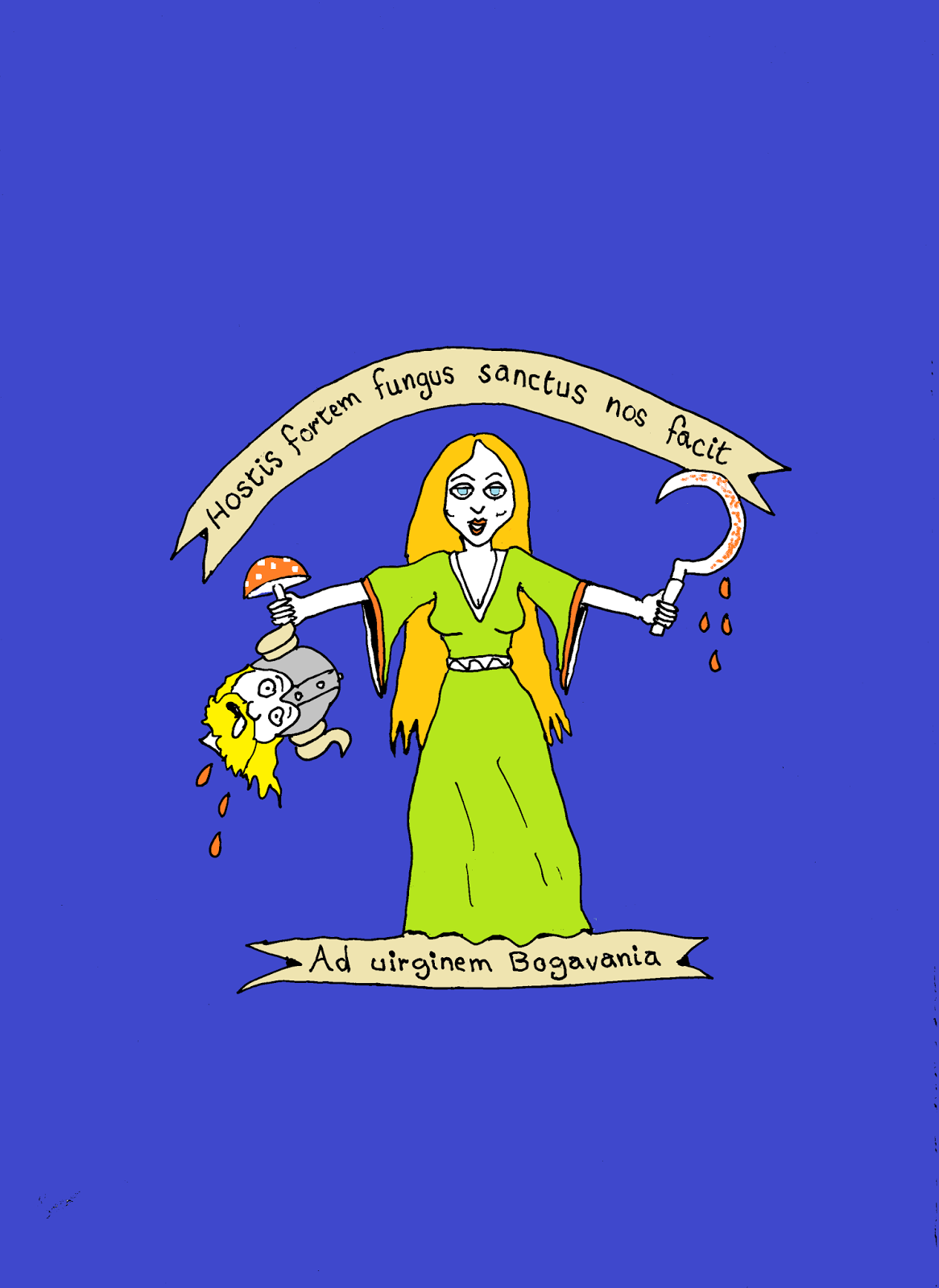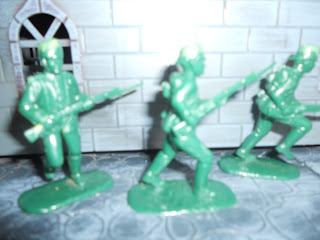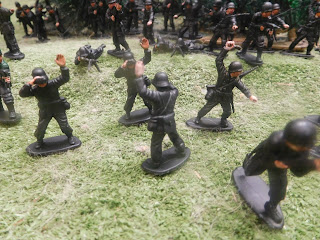Bogavanian Peasant's Flag
The Maid of Bogavania was a peasant girl, Rivina Cowper, born of a milk maid and an unknown Bogavainian knight. She led an uneventful but hard life until the age of six when she saw visions. Her most persistent vision was of a giant mushroom previously thought to be fatal for human consumption. An archangel instructed her to partake of the fungus and it is claimed that she did levitate and was possessed of unusual strength. The girl risked certain burning at the stake for heresy. However, by the time she was fourteen the peasants of her village also partook of the mushrooms at a time of persistent raids by the pagan hill tribes from Beerstein. The Beersteinian rulers had been ignoring the incursions by the tribesmen. Some even suspected that they were encouraging their usual pagan enemies. The villagers were said to be possessed of unusual zeal and strength and drove back the fierce pagans. In recognition of the maid's role her family has been favoured by the king and the church has been urged to give her sainthood.
The relationship between the king and the peasants has not always been a happy one. The villagers of Mad Monk Island illustrated this fact when, ten years ago, sick of depredations by robber barons they, fought the king's soldiers when they attempted to recruit the peasants and quarter in the village. Led by the Mad Monk, Julien Admoster, the peasants used their sickles and pitchforks to unhorse and fall upon the soldiers . Retaliation had been quick as the king had been in no mood for defiance when he was already engaged in war against a rebel noble. The entire population of the village had been slaughtered and the land salted.
Above is the Bogavanian peasants' flag designed by the travelling artist, Bruchatello. It should be said that the attire depicted in the flag is fanciful, as it has the appearance of a noble woman's dress rather than the dirty rags the girl would really have worn.
A more sceptical version of the story relates that the local hallucinatory mushrooms can induce sudden coma in the consumers, giving the appearance of death. According to this less popular version of the story the villagers of Cowpen enthusiastically consumed the fungus and fell in the fields, huts and muddy streets. The raiding pagan Hill People, often called Vikings due to their Scandinavian ancestors, discovered a 'village of the dead' and, thinking the plague had come, bid a hasty retreat, looting not so much as a piglet or abducting a comely wench.
However, it is true that the peasants, on another occasion, did stand off some raiding Hill People. The irony was that the raiders were themselves under the influence of another fungus which did indeed induce a feeling of strength, fighting madness and invulnerability. The peasants, however, were prepared in great numbers and under the leadership of Lord Swartz, one of Bogavania's best warriors. Although he suffered a wound he, almost single handedly slaughtered the invading beserkers. However, only one of the villagers assigned to him survived the bloody encounter, this being the piper, Enker Smith.
In fact, this was typical of the Lord' eccentricity as few lords in the history of Bogavania consorted so easily with the lowest of commoners. In fact, the real reason for lord Swartz's interest in Cowpen and its Maid may well be that he is her father rather than a more lowly knight. Lord Swartz is one of the key barons in the land. At the time most of his knights had been marching with King Blue Iron's column to intercept an invading force of Beersteinian crusaders.
Below: Lord Swartz and his peasant piper.
Peasant standard bearer under construction, made from Hing Fat pirate
The relationship between the king and the peasants has not always been a happy one. The villagers of Mad Monk Island illustrated this fact when, ten years ago, sick of depredations by robber barons they, fought the king's soldiers when they attempted to recruit the peasants and quarter in the village. Led by the Mad Monk, Julien Admoster, the peasants used their sickles and pitchforks to unhorse and fall upon the soldiers . Retaliation had been quick as the king had been in no mood for defiance when he was already engaged in war against a rebel noble. The entire population of the village had been slaughtered and the land salted.
A more sceptical version of the story relates that the local hallucinatory mushrooms can induce sudden coma in the consumers, giving the appearance of death. According to this less popular version of the story the villagers of Cowpen enthusiastically consumed the fungus and fell in the fields, huts and muddy streets. The raiding pagan Hill People, often called Vikings due to their Scandinavian ancestors, discovered a 'village of the dead' and, thinking the plague had come, bid a hasty retreat, looting not so much as a piglet or abducting a comely wench.
However, it is true that the peasants, on another occasion, did stand off some raiding Hill People. The irony was that the raiders were themselves under the influence of another fungus which did indeed induce a feeling of strength, fighting madness and invulnerability. The peasants, however, were prepared in great numbers and under the leadership of Lord Swartz, one of Bogavania's best warriors. Although he suffered a wound he, almost single handedly slaughtered the invading beserkers. However, only one of the villagers assigned to him survived the bloody encounter, this being the piper, Enker Smith.
In fact, this was typical of the Lord' eccentricity as few lords in the history of Bogavania consorted so easily with the lowest of commoners. In fact, the real reason for lord Swartz's interest in Cowpen and its Maid may well be that he is her father rather than a more lowly knight. Lord Swartz is one of the key barons in the land. At the time most of his knights had been marching with King Blue Iron's column to intercept an invading force of Beersteinian crusaders.
Below: Lord Swartz and his peasant piper.
Peasant standard bearer under construction, made from Hing Fat pirate
The peasant flag bearers are almost complete. The second one is made from a Marx Little John. The flags are cut from aluminium can cut slightly longer than the paper flag to allow it to bend over the rod. It is Super Glued and when dry putty is used to fill in the gap. Putty mushrooms are also stuck on the end of the poles.
So here they are ready to lead the peasants against the invaders and maybe one day against their noble masters at home. Come to think of it, although they are both male the pirate reminds me of a female French revolutionary pose from a painting. With some modifications on the flag to the scroll, the maid's dress and possibly a red background and a hammer instead of a mushroom and a head it would make a good communist revolutionary flag for the Balkans or Latin America.
The PVA overcoat is still wet in places as I was in a hurry to up-load the pictures.




















Interesting flag and backstory.
ReplyDelete